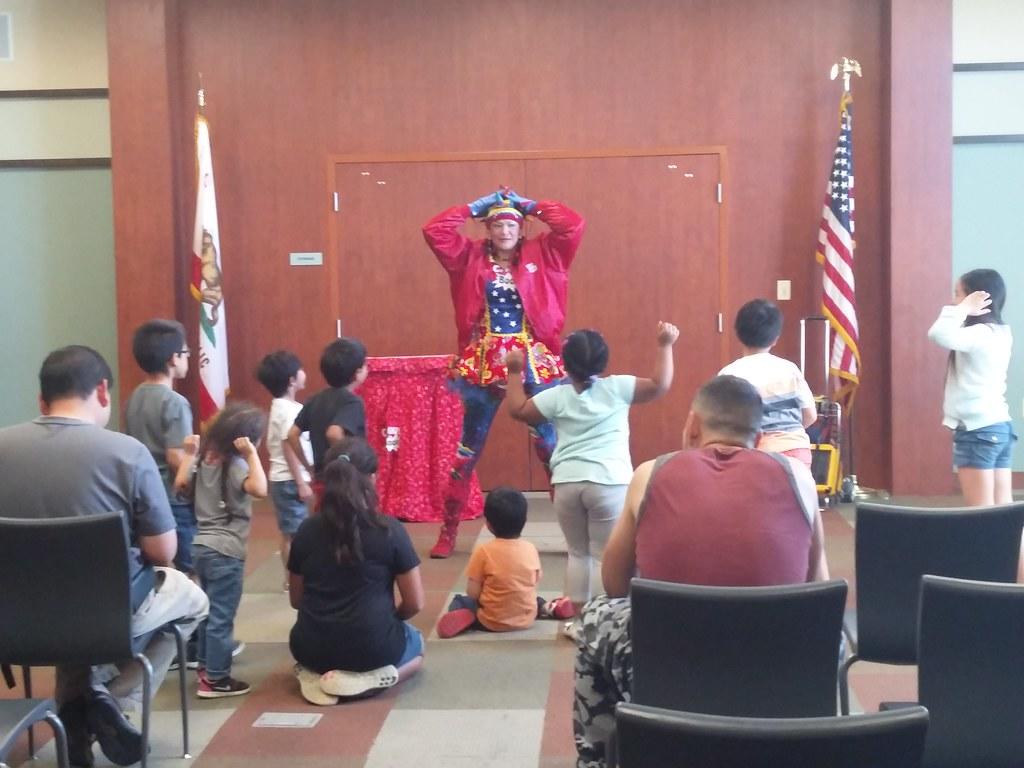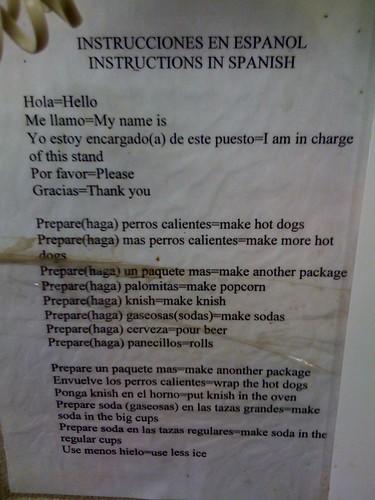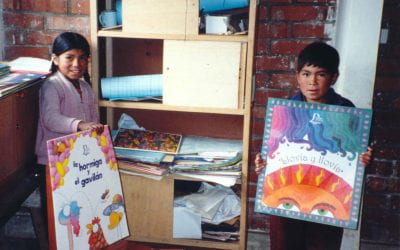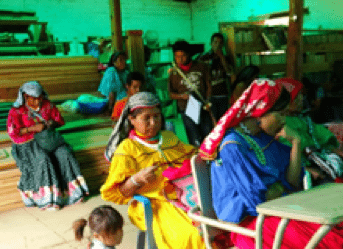Are you a real bilingual?
Elite/Prestigious Bilingual Education in Colombia
In Colombia, it is cool to be bilingual today. However, not all bilinguals are equal. If you are bilingual in English and Spanish, this is considered very positive. But, if you are bilingual in Spanish and an indigenous language, such as Nasa Yuwe, your bilingualism is generally invisible, as many people do not consider this an advantage for career prospects. Thus, so-called “elite” or “prestigious” bilingual schools, particularly those that offer English as well as Spanish, are in high demand in Colombia, as in many other countries in Latin America.
So we may ask, how did these schools begin and why are they so popular today? Although the colonization of the country after the arrival of the Spanish was carried out in Spanish, and indigenous languages were marginalized from official discourse and the school system, after the Second World War in 1945, English became the most important foreign language in the country due to the economic influence and technological development of the United States.
Private bilingual schools were established to cater initially for the sons and daughters of the representatives of multinational companies stationed in Colombia and members of the expatriate communities and provide them with access to suitable bilingual and bicultural programs. Schools such as the Anglo Colombiano, Colegio Alemán and Liceo Francés are examples of these international bilingual schools. Later, so-called national bilingual schools were established mainly by Colombians, catering for students from mostly monolingual Spanish-speaking Colombian families, who want their children to be able to study at a foreign university and have better job prospects.
The international bilingual schools usually have close contacts with foreign governments and they often receive direct financial support or the appointment of foreign teachers to work at the schools. In Bogotá, Colegio Nueva Granada is one of these. It is a private bilingual, bicultural school founded in 1938, offering a U.S. college-preparatory curriculum. Interestingly, on the web page it states, “all classes are taught in English, except Colombian social studies and Spanish”, thus ensuring a mainly English medium, rather than a bilingual orientation.
In a study on private bilingual schools, some colleagues and myself carried out in 2006 with 36 schools in six different regions of Colombia, one of the things we found was that this emphasis on English in the curriculum was not unusual. As one of the coordinators in the Santander region said,
“… if you go into any classroom, you will see a sign… saying ‘Speak English as much as possible.’ So there’s a constant reminder that we should be speaking English as much as we can… during meetings the rector would remind us… that, especially with the Spanish-speaking teachers, that we should be speaking English in the hallways…” (p. 45)
However, in another school, the English coordinator, who was himself from the U.S., stated,
“We’re not an English school, nor an American school; we’re a Colombian school for Colombians, with the highest bilingual standards possible. We’re not trying to find a lot of native American teachers, native British speakers; we’re trying to train the Colombians to teach the Colombians. That’s the whole focus of the school” (p.47)
This is interesting, as it emphasizes the role of Colombian bilingual teachers in providing linguistic and cultural role models for their students. It also questions the role of native English speakers, who for many parents and teachers are fundamental for a “real” bilingual school. However, as David Graddol (2006) in his book English Next has pointed out, the native speaker may be seen as a problem, rather than an advantage for various reasons. One of these is that as English is the world’s most widespread lingua franca, most communication in this language is between people who come from non-Anglo backgrounds and are therefore not English native speakers. For this reason, native speaker accents may seem too remote in these contexts and native speaker language models less useful in a global scenario. Therefore, the author recommends employing high-level bilingual speakers as teachers, who possess skills not available to monolingual native speakers, such as translation and interpreting.
So we may ask, how should teachers and students use the two (or more) languages in a bilingual school? Some people believe that each language should be kept separate and never mixed, as they consider that this affects the purity of the different languages. Jim Cummins in an article published in 2008 entitled, Teaching for transfer: Challenging the two solitudes assumption in bilingual education, has described this position in the following way, “It is assumed that instruction should be carried out, as far as possible, exclusively in the target language without recourse to the students’ first language” (p.65) and described this as the “two solitudes” assumption. In other words, the student´s first language is to be kept apart from the target language in the process of teaching and learning.

“Chiquy Boom” by San José Public Library is licensed under CC BY-SA 2.0
But, is this really realistic? Studies carried out on bilingual interaction have shown that it is normal for bilinguals and multilinguals to draw on both or all of their languages in communicating with another bilingual speaker. However, if this separatist approach is discarded and a more flexible position to bilingual language use is adopted, then a wider panorama opens up. As Jim Cummins argues,
When we free ourselves from exclusive reliance on monolingual instructional approaches, a wide variety of opportunities arise for teaching bilingual students by means of bilingual instructional strategies that acknowledge the reality of, and strongly promote, cross-language transfer” (p.65).
Cross-language transfer, or the use of codeswitching, as it used to be known, has been recognized as legitimate bilingual practice for the last 40 years or so and has been described by Francois Grosjean (1989) in an article published in the journal Brain and language as “the juxtaposition of two languages… Code-switch …is to shift completely to the other language for a word, a phrase, a sentence” (p.9). However, this is often frowned upon in bilingual schools in Colombia, as in other parts of the world.
More recently, Ofelia García and Li Wei in their book Translanguaging: Language, bilingualism and education published in 2014 have discussed the notion of translanguaging which involves the recognition that bilinguals have one linguistic repertoire from which they select features strategically to communicate effectively and that these language practices are seen as normal. We found many examples of the acceptance of translanguaging particularly among students and teachers in national bilingual schools, as can be seen in the examples below which come from a study on biliteracy into the online bilingual practices of 10th and 11th grade students from a Christian bilingual school in Bogotá, carried out by Norma Vanegas in 2014,
1 pero bno q mal no voy a ir al insai
[but good or bad I am not going to the insight]
why?????”
2 sube el link
[upload]
3 deja el show
[leave]
4 No desperdicies tu vida en estupideses como drogas, alcohol, o cosas asi, aprovecha tu
vida, u got a reason to live!!
[Don´t waste your life in stupid things like drugs, alcohol and things like that, make the most of your life ]

“Instrucciones” by Kilgub is licensed under CC BY-NC-ND 2.0
Far from being a lazy or deficient way of communicating, it can be seen that the students use their bi-and multilingualism to produce a sophisticated interactive text, as demonstrated in the following example,
-/1D= @onedirection/, -/Tristemente…:S Jajajaj/, -/Muchas tareas, demasiadas cosas de @onedirection para ver…#NotFaiR/, -/Dio è perfetto, la sua volontà è perfetto/, -/”…Oh I believe in yesterday”/, -/Cause perfect didn´t feel so perfect”/, -/”I´m just a bird that already flown away”/, -/Armar un cubo Rubik!!/
I will leave the reader to work out a possible interpretation, taking into account references to such diverse elements as @onedirection, religious discourse- Dio è perfetto, la sua volontà è perfetto– and the title of a Beatles’ song – Oh I believe in yesterday -.
As well as promoting bi/multilingualism in two or more languages, private bilingual schools in Colombia are increasingly becoming aware of the intercultural dimension to language teaching and learning and often include references to intercultural speakers or mediators in their student exit profiles. For example, the German School in Medellín states that they “prepare students for encounters with other nations and cultures so they may be open to the world in a spirit of international understanding”, while Colegio Nogales in Bogotá refers to the aim of having students realize “the recognition and pride of being Colombian in a universal context”. Another national bilingual school in Bogotá, Colegio Tilatá, provides a more detailed description of what they expect of their bilingual, intercultural graduates, declaring,
“we foster the education of intercultural beings, respectful of difference, capable of interacting with other people and communities, committed to Colombia and the world by means of an education which takes into account the individual characteristics of each student and the profile of the Tilatá student”
A teacher who works in bilingual education recognized how important it is for bilingual teachers to work with their students to develop intercultural sensitivity. After participating in a project to help teachers become more aware of intercultural contact and understanding as part of his Masters studies, he acknowledged that, “…a successful English teacher needs much more than… technical ability…Teachers have the ability [to] reinforce and perpetuate hatred or stimulate diversity and inspire students to create a better world” (Jaime Durán, Masters in Education student, 2018). This is very important in all parts of the educational system, but particularly in the private sector in Latin American countries where students come from the richer social strata and sometimes do not appreciate the value of diversity both within their own countries as well as at international level.
An example of this comes from a teacher in a private bilingual school in Cali, in a book I wrote in 2002 entitled Power, Prestige and Bilingualism, who reported that at primary level,
“some children had a definite preference for anything to do with the foreign language (English), rather than the first language (Spanish). She attributed this to the fact that many families give US culture high priority and see it as superior to Colombian customs and ways of behaving. The teacher felt it was important that the school should give weight to the home culture of the students as well as the foreign culture, and demonstrate the advantages of knowing the similarities and differences of both cultural systems” (p. 282).
So, to finish, I would like to leave the reader with a few questions to think about. First of all, I would like to ask whether you think it is possible to be bilingual if one language is oral, such as English or Spanish, and the other gestural-visual, like Sign Language? Another question I would like to ask is whether to be a “real” bilingual, a speaker needs to speak, understand, read and write both languages, or whether it is possible to be bilingual when you can speak and understand two languages, but may not be literate in both?
Finally, I would like to suggest to the reader that although the terms “elite” and “prestigious” bilingualism are commonly used to refer to the type of language learning we have been talking about here, perhaps a more inclusive term is that used by Joshua Fishman many years ago (1977). When writing about the sociology of bilingual education he said, “Enrichment bilingual education…gives an additional window on the world…Enrichment bilingual education has in mind the expansion of intellect and personality”. I would suggest that this expansion of intellect and personality is equally desirable for bilinguals from Indigenous language and Creole-speaking communities as it is for bilinguals from upwardly mobile, middle and upper-class backgrounds.
Ann-Marie de Mejía’s short presentation on her work during the ReVista billingualism colloquium.
Spring 2020, Volume XIX, Number 2
Anne-Marie de Mejía is originally from the U.K. and has worked at universities in Colombia teaching and researching in the areas of bilingualism, bilingual education, interculturalism and language and education policy. She has published on these topics in English and Spanish.
Related Articles
Ghosts of Sheridan Circle
Targeted killing of political enemies—assassinations—is thankfully rare in the United States. The most famous such assassination occurred in Washington, DC. And it was committed by a close ally of the United States. In September 1976, Chile’s Pinochet dictatorship…
Bilingualism: Editor’s Letter
It was snowing heavily in New York. It didn’t matter much to me. I was in sunny Santo Domingo with my New York Dominican neighbors on the Christmas break from school. I learned Spanish from them and also at the local bodega, where the shop owner insisted I ask…
Two Wixaritari Communities
English + Español
I first arrived in the wixárika (huichol) zone north of Jalisco, Mexico, in 1998. The communities didn’t have electricity then, and it was really hard to get there because the roads were simply…




